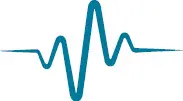«The Mindful Path Through Worry and Rumination: Letting Go of Anxious and Depressive Thoughts». Sameet Kumar.
«The Mindful Way Through Anxiety: Break Free from Chronic Worry and Reclaim Your Life». Susan Orsillo and Lizabeth Roemer.
«Things Might Go Terribly, Horribly Wrong: A Guide to Life Liberated from Anxiety». Kelly Wilson and Troy DuFrene.
«The Worry Trap: How to Free Yourself from Worry and Anxiety Using Acceptance and Commitment Therapy». Chad LeJeune.

Addis, M. E., C. Hatgis, E. Cardemile, K. Jacob, A. D. Krasnow, and A. Mansfield. 2006. «Effectiveness of Cognitive-Behavioral Treatment for Panic Disorder Versus Treatment as Usual in a Managed Care Setting: 2-Year Follow-Up». Journal of Consulting and Clinical Psychology 74: 377–385.
Ahmed, M., H. A. Westra, and S. H. Stewart. 2008. «A Self-Help Handout for Benzodiazepine Discontinuation Using Cognitive Behavior Therapy». Cognitive and Behavioral Practice 15: 317–324.
Amano, T., C. T. Unal, and D. Paré. 2010. «Synaptic Correlates of Fear Extinction in the Amygdala». Nature Neuroscience 13: 489–495.
Anderson, E., and G. Shivakumar. 2013. «Effects of Exercise and Physical Activity on Anxiety». Frontiers in Psychiatry 4: 1–4.
Armony, J. L., D. Servan-Schreiber, J. D. Cohen, and J. E. LeDoux. 1995. «An Anatomically Constrained Neural Network Model of Fear Conditioning». Behavioral Neuroscience 109: 246–257.
Barad, M. G., and S. Saxena. 2005. «Neurobiology of Extinction: A Mechanism Underlying Behavior Therapy for Human Anxiety Disorders». Primary Psychiatry 12: 45–51.
Bequet, F., D. Gomez-Merino, M. Berhelot, and C. Y. Guezennec. 2001. «Exercise-Induced Changes in Brain Glucose and Serotonin Revealed by Microdialysis in Rat Hippocampus: Effect of Glucose Supplementation». Acta Physiologica Scandinavica 173: 223–230.
Bourne, E. J., A. Brownstein, and L. Garano. 2004. Natural Relief for Anxiety: Complementary Strategies for Easing Fear, Panic, and Worry. Oakland, CA: New Harbinger.
Brantley, J. 2007. Calming Your Anxious Mind , 2nd ed. Oakland, CA: New Harbinger.
Broman-Fulks, J. J., and K. M. Storey. 2008. «Evaluation of a Brief Aerobic Exercise Intervention for High Anxiety Sensitivity». Anxiety, Stress, and Coping 21: 117–128.
Broocks, A., T. Meyer, C. H. Gleiter, U. Hillmer-Vogel, A. George, U. Bartmann, and B. Bandelow. 2001. «Effect of Aerobic Exercise on Behavioral and Neuroendocrine Responses to Meta-chlorophenylpiperazine and to Ipsapirone in Untrained Healthy Subjects». Psychopharmacology 155: 234–241.
Busatto, G. F., D. R. Zamignani, C. A. Buchpiguel, G. E. Garrido, M. F. Glabus, E. T. Rocha, et al. C. 2000. «A Voxel-Based Investigation of Regional Cerebral Blood Flow Abnormalities in Obsessive-Compulsive Disorder Using Single Photon Emission Computed Tomography (SPECT)». Psychiatry Research: Neuroimaging 99: 15–27.
Cahill, S. P., M. E. Franklin, and N. C. Feeny. 2006. «Pathological Anxiety: Where We Are and Where We Need to Go». In: Pathological Anxiety: Emotional Processing in Etiology and Treatment , edited by B. O. Rothbaum. New York: Guilford.
Cain, C. K., A. M. Blouin, and M. Barad. 2003. «Temporally Massed CS Presentations Generate More Fear Extinction Than Spaced Presentations». Journal of Experimental Psychology: Animal Behavior Processes 29: 323–333.
Cannon, W. B. 1929. Bodily Changes in Pain, Hunger, Fear, and Rage. New York: Appleton.
Claparede, E. 1951. «Recognition and ‘Me-ness’». In Organization and Pathology of Thought , edited by D. Rapaport. New York: Columbia University Press.
Compton, R. J., J. Carp, L. Chaddock, S. L. Fineman, L. C. Quandt, and J. B. Ratliff. 2008. «Trouble Crossing the Bridge: Altered Interhemispheric Communication of Emotional Images in Anxiety». Emotion 8: 684–692.
Conn, V. S. 2010. «Depressive Symptom Outcomes of Physical Activity Interventions: Meta-analysis Findings». Annals of Behavioral Medicine 39: 128–138.
Cotman, C. W., and N. C. Berchtold. 2002. «Exercise: A Behavioral Intervention to Enhance Brain Health and Plasticity». Trends in Neurosciences 25: 295–301.
Crocker, P. R., and C. Grozelle. 1991. «Reducing Induced State Anxiety: Effects of Acute Aerobic Exercise and Autogenic Relaxation». Journal of Sports Medicine and Physical Fitness 31: 277–282.
Croston, G. 2012. The Real Story of Risk: Adventures in a Hazardous World. Amherst, NY: Prometheus Books.
Davidson, R. J. 2004. «What Does the Prefrontal Cortex ‘Do’ in Affect: Perspectives on Frontal EEG Asymmetry Research». Biological Psychology 67: 219–233.
Davidson, R. J., and S. Begley. 2012. The Emotional Life of Your Brain: How Its Unique Patterns Affect the Way You Think, Feel, and Live – and How You Can Change Them. New York: Hudson Street Press.
DeBoer L., M. Powers, A. Utschig, M. Otto, and J. Smits. 2012. «Exploring Exercise as an Avenue for the Treatment of Anxiety Disorders». Expert Review of Neurotherapeutics 12: 1011–1022.
Delgado, M. R., K. I. Nearing, J. E. LeDoux, and E. A. Phelps. 2008. «Neural Circuitry Underlying the Regulation of Conditioned Fear and Its Relation to Extinction». Neuron 59: 829–838.
Dement, W. C. 1992. The Sleepwatchers. Stanford, CA: Stanford Alumni Association.
Desbordes, L. T., T. W. W. Negi, B. A. Pace, C. L. Wallace, C. L. Raison, and E. L. Schwartz. 2012. «Effects of Mindful-Attention and Compassion Meditation Training on Amygdala Response to Emotional Stimuli in an Ordinary, Non-meditative State». Frontiers in Human Neuroscience 6, article 292.
Dias, B., S. Banerjee, J. Goodman, and K. Ressler. 2013. «Towards New Approaches to Disorders of Fear and Anxiety». Current Opinion on Neurobiology 23: 346–352.
Doidge, N. 2007. The Brain That Changes Itself: Stories of Personal Triumph from the Frontiers of Brain Science. New York: Penguin.
Drew, M. R., and R. Hen. 2007. «Adult Hippocampal Neurogenesis as Target for the Treatment of Depression». CNS and Neurological Disorders – Drug Targets 6: 205–218.
Dunn, A. L., T. G. Reigle, S. D. Youngstedt, R. B. Armstrong, and R. K. Dishman. 1996. «Brain Norepinephrine and Metabolites After Treadmill Training and Wheel Running in Rats». Medicine and Science in Sports and Exercise 28: 204–209.
Dwyer, K. K., and M. M. Davidson. 2012. «Is Public Speaking Really More Feared Than Death?» Communication Research Reports 29: 99–107.
Engels, A. S., W. Heller, A. Mohanty, J. D. Herrington, M. T. Banich, A. G. Webb, and G. A. Miller. 2007. «Specificity of Regional Brain Activity in Anxiety Types During Emotion Processing». Psychophysiology 44: 352–363.
Fagard, R. H. 2006. «Exercise Is Good for Your Blood Pressure: Effects of Endurance Training and Resistance Training». Clinical and Experimental Pharmacology and Physiology 33: 853–856.
Feinstein, J. S., R. Adolphs, A. Damasio, and D. Tranel. 2011. «The Human Amygdala and the Induction and Experience of Fear». Current Biology 21: 34–38.
Foa, E. B., J. D. Huppert, and S. P. Cahill. 2006. «Emotional Processing Theory: An Update». In: Pathological Anxiety: Emotional Processing in Etiology and Treatment , edited by B. O. Rothbaum. New York: Guilford.
Froeliger, B. E., E. L. Garland, L. A. Modlin, and F. J. McClernon. 2012. «Neurocognitive Correlates of the Effects of Yoga Meditation Practice on Emotion and Cognition: A Pilot Study». Frontiers in Integrative Neuroscience 6: 1–11.
Читать дальше
![Элизабет Карле Перенастройте свой встревоженный мозг [Как использовать неврологию страха, чтобы остановить тревогу, панику и беспокойство] [litres] обложка книги](/books/407550/elizabet-karle-perenastrojte-svoj-vstrevozhennyj-mo-cover.webp)



![Анджей Беловранин - Мир, поставленный на паузу. Страхи, надежды и реальность эпохи коронавируса [Страхи, надежды и реальность эпохи коронавируса] [litres]](/books/396498/andzhej-belovranin-mir-postavlennyj-na-pauzu-stra-thumb.webp)
![Уильям Дж Кнаус - Когнитивно-поведенческая терапия тревоги [Пошаговая программа] [litres]](/books/405933/uilyam-dzh-knaus-kognitivno-thumb.webp)
![Джошуа Кертисс - Не позволяйте тревоге рулить вашей жизнью [Наука управления эмоциями. Наука управления эмоциями и осознанность для преодоления страха и беспокойства] [litres]](/books/412454/dzhoshua-kertiss-ne-pozvolyajte-trevoge-rulit-vashej-thumb.webp)






